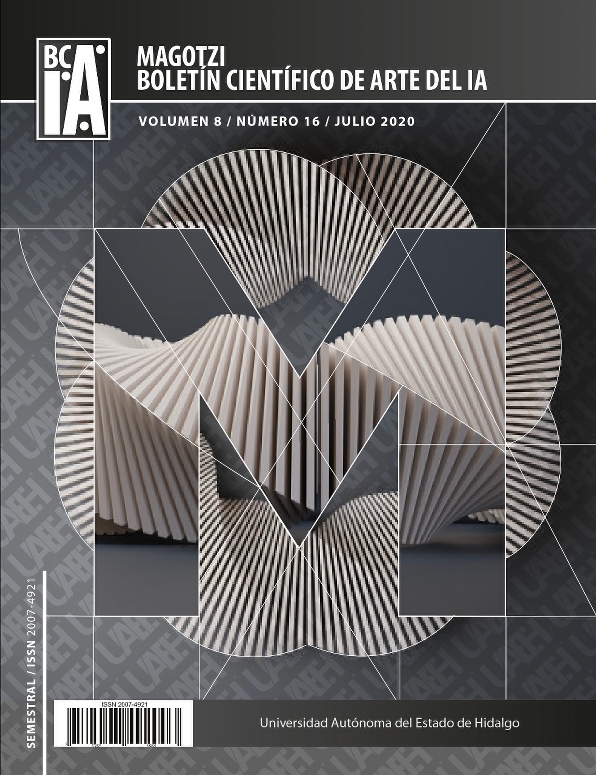Transitional Shapes
DOI:
https://doi.org/10.29057/ia.v8i16.4884Keywords:
matter, shape, transformation, wear, work of artAbstract
Sculpture is understood in three dimensions: height, width and depth. The nature of sculpture is not only visual, but also tactile and material. Its processes have changed over time, from materials and utensils to shapes and intentionality. The composition of matter is fragile, its constitution is susceptible, vulnerable to modification. The artist transforms; he begins by observing his surroundings and then fixes his attention on an entity from which he detaches his essence, he immediately re-interprets it from his own definition. A sculptural body is matter, Physics argues that matter is prone to undergo alterations in its composition, according to its characteristics of resistance. Wear is proof of the trail of life, of the process of things, of its path by time and space through erosion, rust, aging, detachment and tearing. The transformations of matter are subject to natural processes and principles of action-reaction.
Downloads
Publication Facts
Reviewer profiles N/A
Author statements
Indexed in
- Academic society
- N/A
References
Colección Imagen. (1992). David Lynch, Sala Parpalló- Palau Dels Scala, Editions Alfons El Magnànim, Diputación Provincial de Valencia. Valencia.
García Cortés, José Miguel, (1997). Orden y Caos: Un estudio cultural sobre lo monstruoso en el arte. Anagrama, Colección Argumentos. Barcelona.
Guasch, Ana María. (2000). El Arte Ultimo del Siglo XX. Del Post Minimalismo a lo Multicultural. Alianza Forma. Madrid.
Heidegger, Martin (2001). Arte y poesía. Breviarios. Fondo de Cultura Económica. México.
Kandinsky, Wassily, (2002). De lo Espiritual en el Arte. Ediciones Coyoacán. Novena edición. México.
Krauss, Rosalind. (2002). Pasajes de la Escultura Moderna. Akal. Madrid.
Museo Dolores Olmedo. (2005). Henry Moore y México. TATE, British Council. México.
Xirau, Ramón. (1990). Introducción a la Historia de la Filosofía. Universidad Nacional Autónoma de México. México.



















